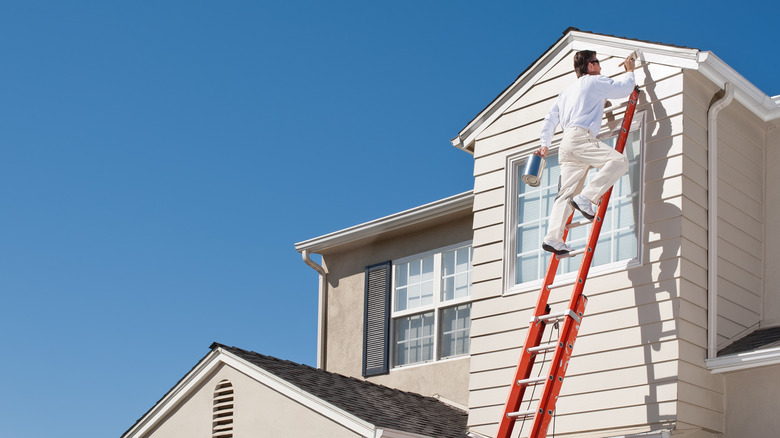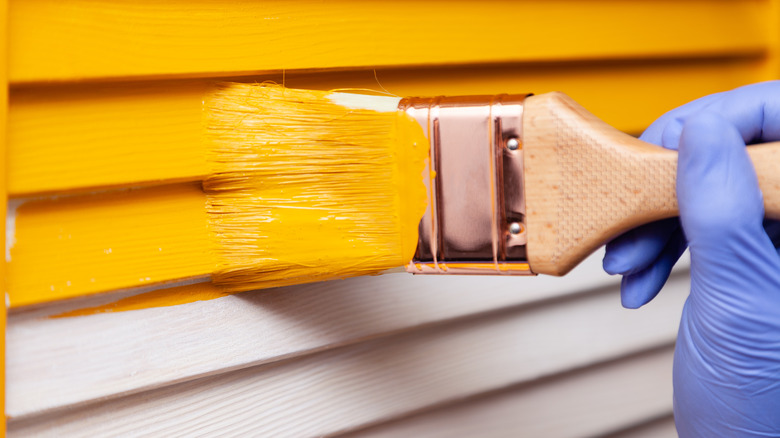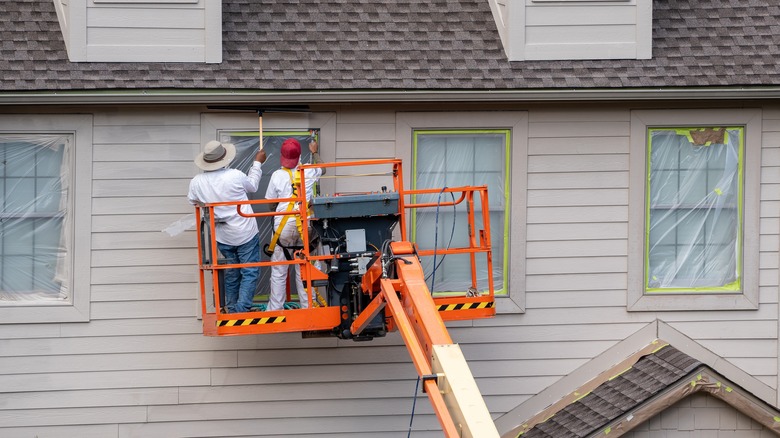Why You May Want To Reconsider Painting Your Vinyl Siding And Windows
When you are preparing to spruce up the exterior of your home, one of the best ways is to select among the various types of house siding and then install your favorite. Vinyl is a highly popular selection for both siding and windows, as it offers an excellent mix of durability, color choices, ease of maintenance, and value. If you installed vinyl siding and windows several years ago, though, you may be ready for another remodeling effort, such as to brighten up the exterior of the home with a new paint color while also refreshing vinyl that may be showing its age. Although it is possible to paint siding and window casing in a remodel, you may want to think twice before undertaking this process, as numerous challenges are associated with doing this type of job well.
The biggest problem with painting over the top of your siding and windows is that you could cause the manufacturer of the material to void your warranty. If you paint original vinyl with a dark color, this color could absorb heat at a higher rate than the original materials. Over time, the extra heat can damage the vinyl, which is why manufacturers may refuse to honor warranty claims after this type of job. Consequently, you should never paint brand-new vinyl siding and windows. Before painting over the top, contact the company that supplied your panels or windows to determine what kinds of changes you can make to them.
Challenges with aesthetics when painting over vinyl siding and windows
Even if you have no worries about voiding the warranty for your vinyl siding and windows, you may not want to paint over the top of the material because of the chance that the final product will not look very good. Although paint will adhere, the vinyl materials naturally expand and contract slightly in hot and cold weather. This stretching of the material can cause the paint to pull loose from it, causing bubbling and cracking, as it simply isn't able to match the expansion in the vinyl.
You certainly can try to alleviate this problem through a few techniques. Avoid adding a color over the top of the siding or windows that are significantly darker. Try to stick with a similar color shade to avoid the extra absorption of heat in the vinyl that can enhance the expansion of the material. Additionally, try to stick with a brand and formula of paint listed as safe for use on vinyl. Typically, you'll want to look for ingredients like latex urethane in this formula for the best results.
To improve the chance of having a good result with this type of project, you may want to add a layer of white or light gray primer to the siding or window first. This helps the final coat with the color you want to adhere better to the vinyl, hopefully allowing it to reduce bubbling and peeling for longer.
Before painting vinyl siding and windows, weigh the pros and cons for cost
In nearly all cases, painting your vinyl siding and windows is cheaper than replacing them. This is the primary reason why undertaking this kind of project is so appealing. However, sometimes, what seems cheaper in the short term may be money wasted in the long term. Before deciding to try to paint your vinyl siding and windows, you should weigh the cost benefits closely.
If you plan to do the job yourself, you can expect to spend less than $1,000, with most of that expense relating to the cost of the paint, as you'll need a lot of it to cover all of the siding. The cost to hire a pro to paint the entire house will range from $3,500 to $7,000, but it could be higher for multi-story homes. If you are replacing your vinyl siding, you can expect to spend $10,000 or more. However, if the siding is in poor condition with broken and warped pieces, the paint is not going to cover such blemishes.
With windows, the cost difference is even more pronounced, as the amount of paint you'd have to use on the small surface area of the casing of a window is minimal, while you may pay close to $300 per replacement window. Doing this job on a vinyl window is far more cost-effective than replacing perfectly good glass that is still giving you energy efficiency benefits.


